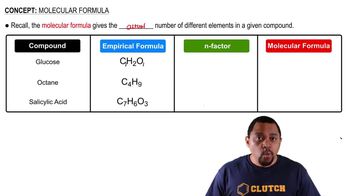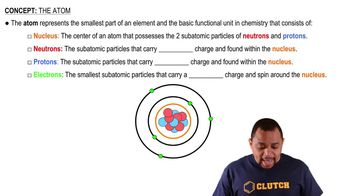Here are the essential concepts you must grasp in order to answer the question correctly.
Molecular Formula
A molecular formula represents the number and type of atoms in a molecule. For hydrocarbons like benzene, ethane, and ethylene, the formula indicates the ratio of carbon (C) to hydrogen (H) atoms. Understanding how to derive these formulas based on atomic weights and the number of atoms is essential for calculating possible molecular structures.
Recommended video:
Determining Molecular Formulas
Atomic Weight
Atomic weight is the weighted average mass of an element's isotopes, measured in atomic mass units (amu). For carbon, the atomic weight is approximately 12.011 amu, while for hydrogen, it is about 1.008 amu. This concept is crucial for determining the mass contributions of each element in a compound, which aids in calculating molecular formulas.
Recommended video:
Empirical vs. Molecular Formula
The empirical formula represents the simplest whole-number ratio of atoms in a compound, while the molecular formula shows the actual number of atoms. For example, benzene has a molecular formula of C6H6, but its empirical formula is CH. Understanding the distinction between these formulas is important for accurately determining the composition of organic compounds based on their atomic weights.
Recommended video:
Empirical vs Molecular Formula




